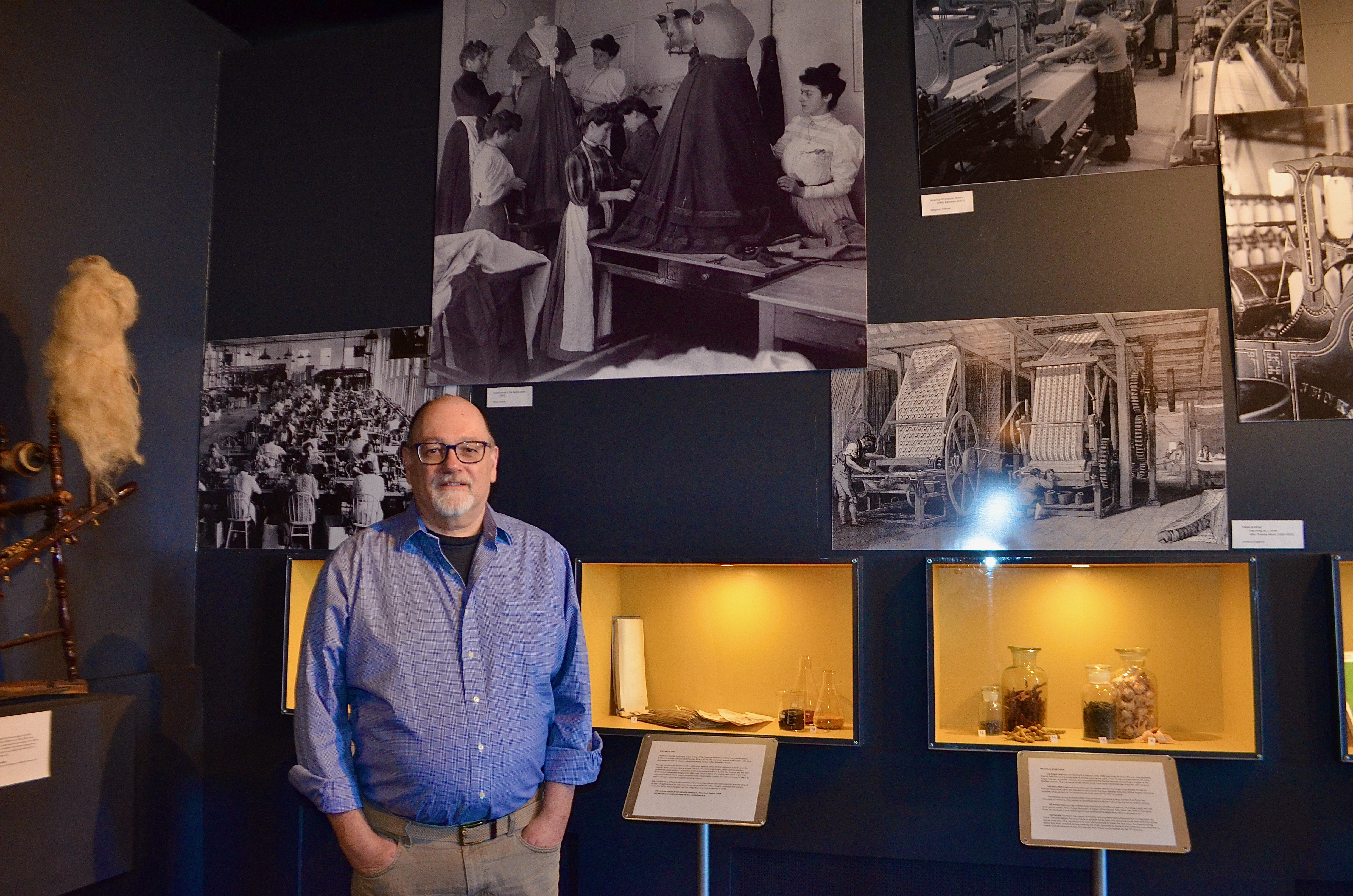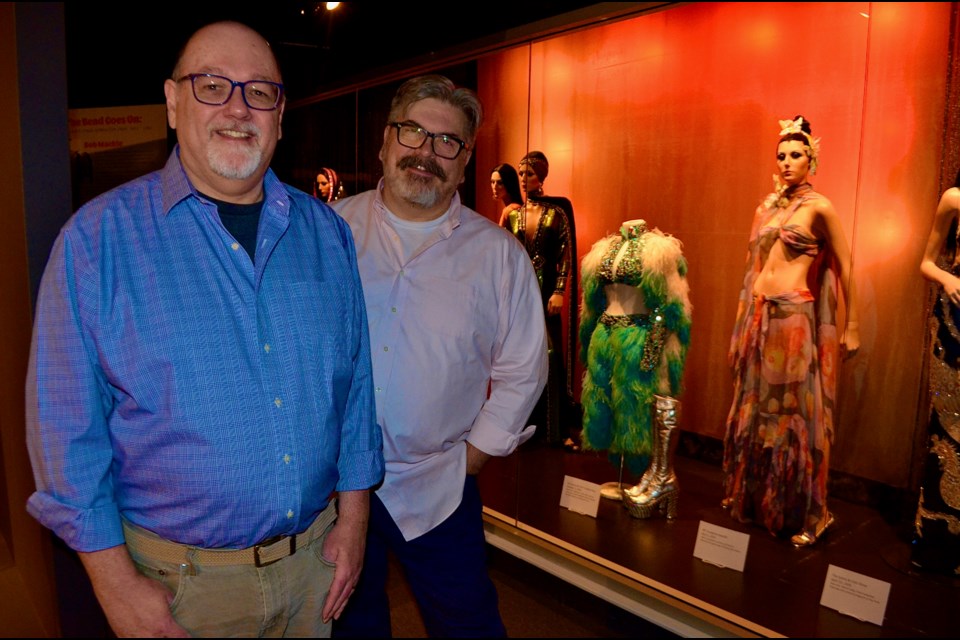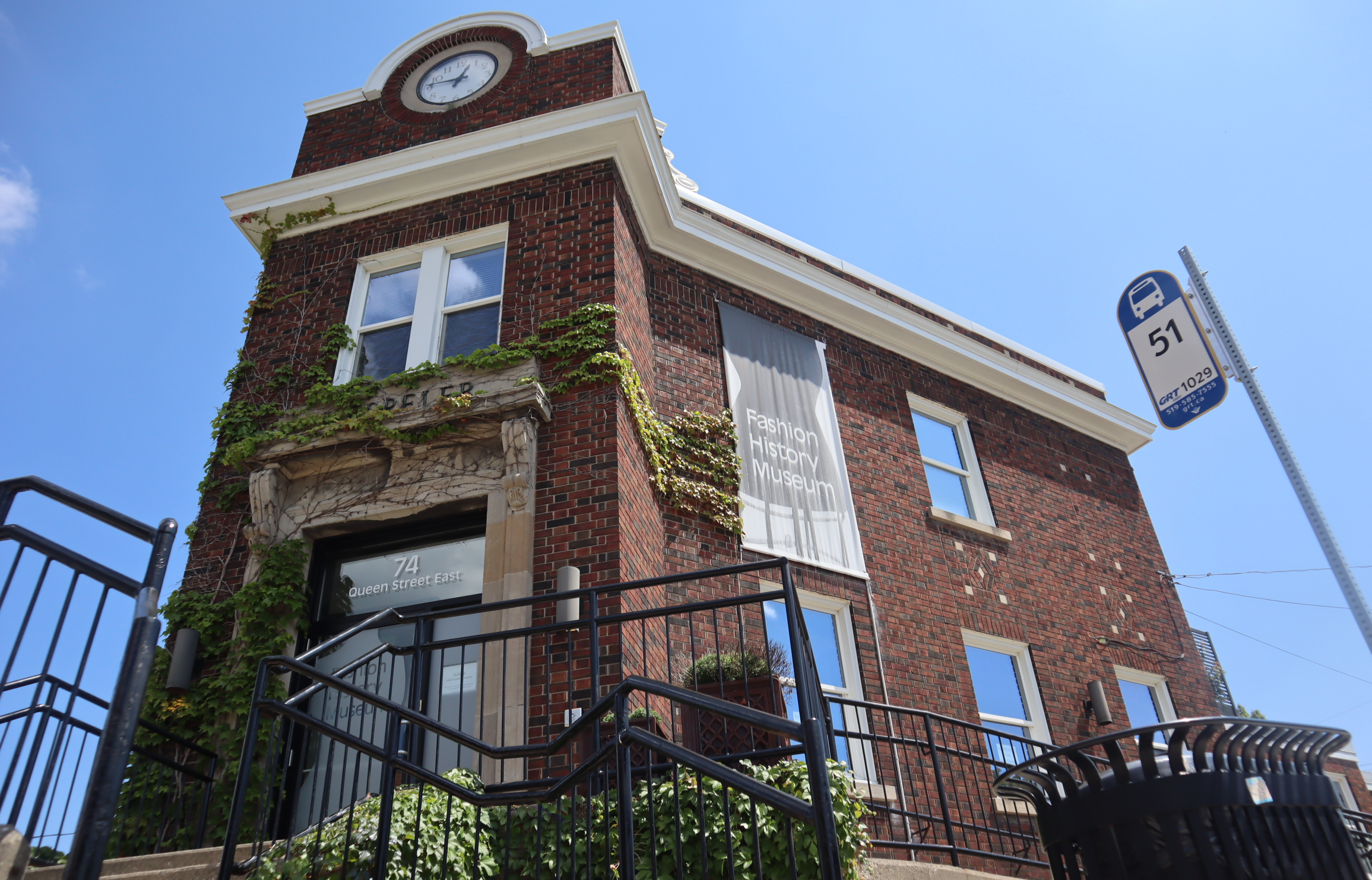The Fashion History Museum in Hespeler reopened last week with a new exhibit featuring outfits made famous by actor, singer and style icon Cher.
“This is exciting for us because it was four years in the making,” said FHM co-founder Kenn Norman. “Some were worn a few times, but generally speaking, many were only worn once or twice. It’s just an amazing wardrobe.”
The outfits were created specifically for Cher by award-winning costume designer Bob Mackie.
“Cher was very glamorous and very daring,” said Norman. “That was part of the relationship between Bob Mackie and Cher. He would really push the envelope for a lot of things, and she could carry it.”
They got loan of the outfits from a private collector who is friends with FHM’s first artist in residence, Bob Haven.
“They met because there were some beading repairs needed and Bob Haven is an expert with specialized methods of embroidery and beadwork,” Norman said. “He has gone out of his way to collect mannequins that are the same size as her, which is not easy, then doing the hair and the makeup, particularly for the songs that were performed while wearing these outfits.”
Haven will be returning to the museum in the fall to do some workshops and take part in other events including a Cher-aoke contest.
“People will be judged on best imitation, best singer, best of all those kinds of things,” said Norman. “It is going to be a lot of fun and we are just in the works of planning that out for September.”
Excitement about the Cher exhibit and the museum reopening was tempered by funding concerns and an impending decision from Cambridge City Council that could determine whether the doors of the FHM stay open.
“We are part of what’s called the Community Grants Program,” said Norman. “That’s a line item within the budget. There is a set amount for a number of charitable and non-profit groups. The call goes out once a year and there is a separate committee within the city council that looks after the applications”.
Norman said that, like most museums, FHM doesn’t generate enough revenue from admission fees and retail sales to cover all their expenses and relies largely on donations as well as various federal, provincial, and municipal subsidies and grants.

“During the COVID period there was an opportunity for federal subsidies for wages and rent,” he said. “That helped us tremendously because we knew the city was so strapped for cash and cash flow.”
With those federal subsidies no longer available they are looking to the city for help and intend to appeal to the Community Grants Program committee, during a presentation March 28, to provide all the funds they requested in their grant application.
“We have been informed that, at this moment, we have $45,000 allocated to us from our request of $96,800,” Norman said. “We pay $80,000 in rent alone. The balance of $16,800 is a contribution toward utilities, insurance, security and other expenses and it is not enough to cover it. Our hydro and gas alone are between $800 and $1,000 a month. So, it goes really quickly.”
Failure to procure all the funds requested will force them to make tough decisions about the future of the museum.
“Our board of directors is considering all options at that point,” Norman said. “It’s a domino effect because we have other grants tied into this. If our tenancy is in question, then that will jeopardize those grants.”
One option the FHM board is considering is a request to the city for rent relief.
“Since they (the city) took ownership in 2020 we have been paying full rent,” Norman said. “Most museums do not pay rent. A lot of museums are municipally owned and those that aren’t, typically have a property where they pay rent of a dollar per year.”
Norman said they have been a good caretaker of the property and have spent a lot of money and resources restoring and modernizing the century old building since they started leasing it in 2014.
Those efforts align with the city’s interests and their reasons for buying the former Hespeler Post Office building in the first place.
“The city was interested in protecting the building from being demolished for development of apartment buildings and so forth at the time,” Norman said. “They purchased the building with funds from the Core Transformation Fund, which was, at that time, brand new and we were the first project, I believe.”
Norman said if the museum closes, the city will have to find another tenant or take over the day- to-day operations, maintenance, and security of the building, which could end up costing more than they would lose by waiving the rent.
“We are unique in Canada,” said Norman. “We are the only museum devoted to fashion and that does what we do. Everything about fashion can be related to something else whether it’s finance, technology, economics, labour laws, all kinds of things. There are so many factors that come into it. Canada was actually founded on fashion with the trade of beaver pelts.”
Norman hopes the city will recognize that they are not only helping to preserve an historic Hespeler landmark and by extension the village’s architectural heritage, but the history and character of the city.
“We are not here for profit,” he said. “We are here to be of service. We have things of public trust that are left for us to care for. We’re here for education, community involvement and engagement as well. So, it’s a very different scenario.”

